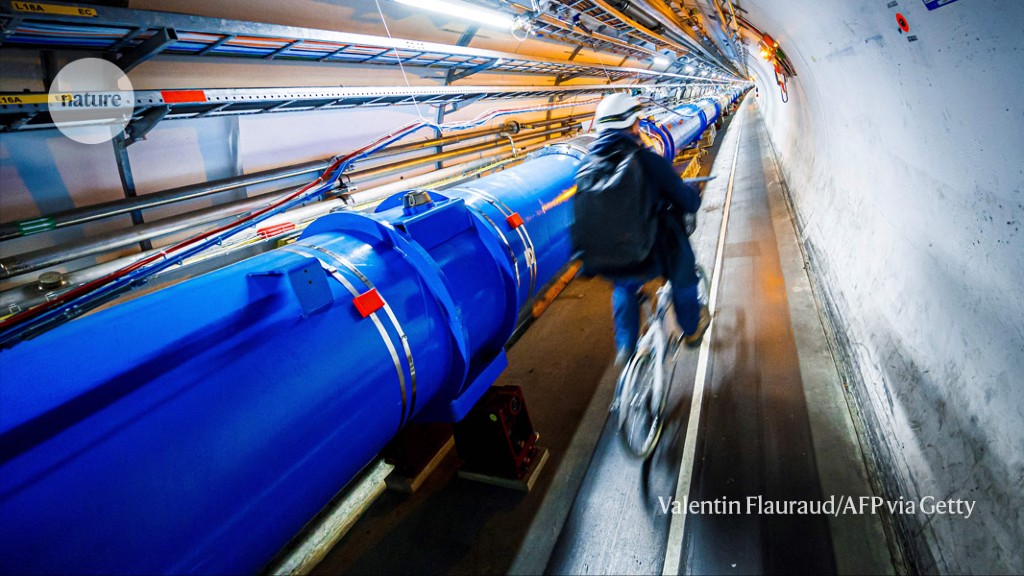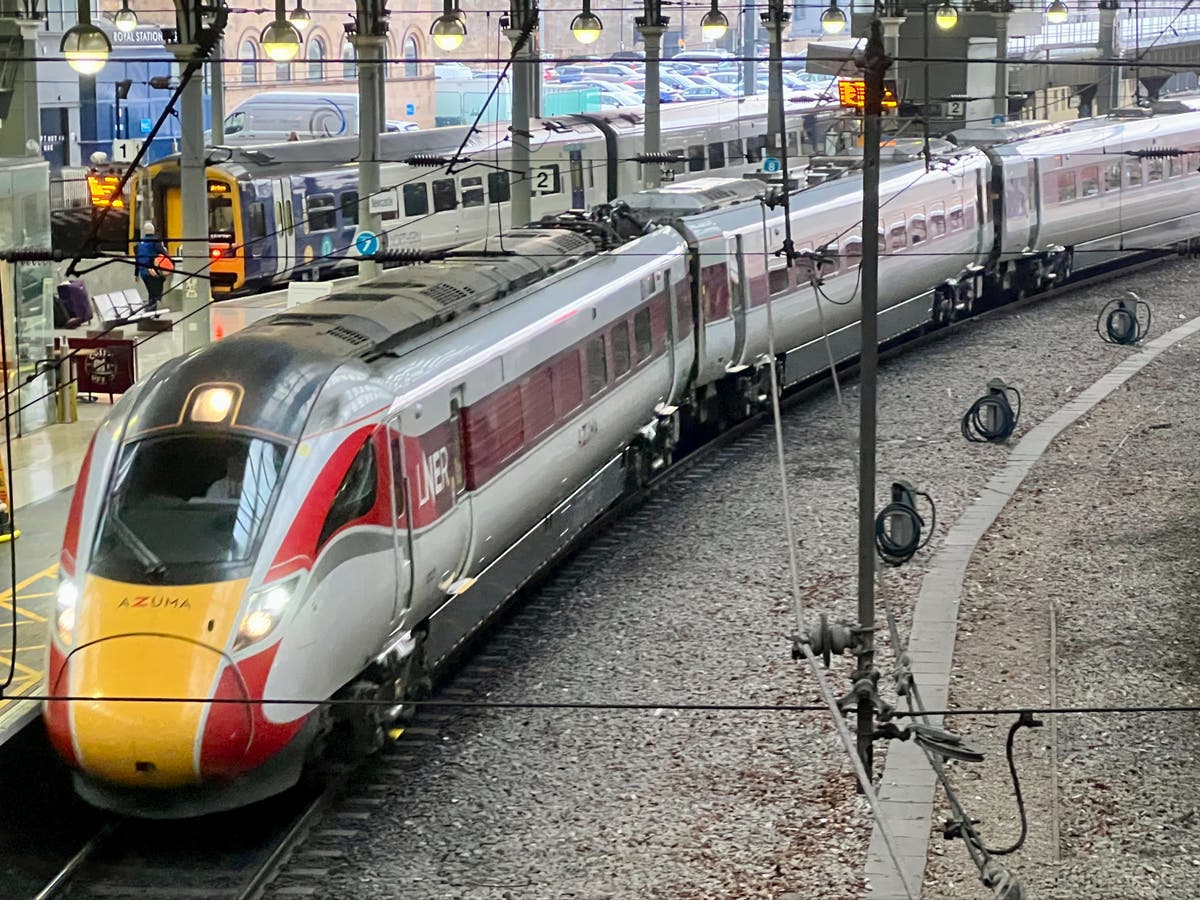The accelerator that follows the Large Hadron Collider is a major focus for particle physicists.Credit: Valentin Flauraud/AFP via Getty
The United States should fund proposed projects to dramatically scale up its efforts in five areas of high-energy physics, an influential panel of scientists has concluded.
Topping the ranking is the Cosmic Microwave Background–Stage IV project, or CMB-S4, which envisions an array of 12 radiotelescopes split between Chile’s Atacama Desert and the South Pole. It aims to look for indirect evidence of physical processes in the instants after the Big Bang that have been mostly speculative so far.
The other four priorities are experiments to study the elementary particles called neutrinos, both of astrophysical origin and those made in the laboratory; the largest-ever dark-matter detector; and a strong US participation in a future particle collider — to be built in another country — to study the Higgs boson.
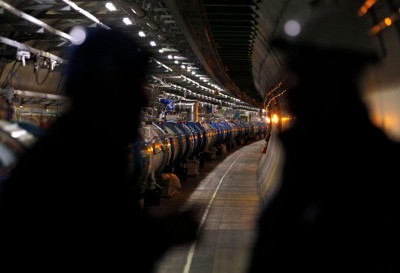
Particle physicists want to build the world’s first muon collider
An ad-hoc group called the Particle Physics Project Prioritization Panel (P5) presented the recommendations on 7 December. The committee, which is convened roughly once a decade, was charged to make recommendations for the two main US agencies that fund research in high-energy physics, the Department of Energy and the National Science Foundation.
In addition to the five key recommendations, the report says that the United States should embark on a programme to demonstrate the feasibility of two completely new kinds of particle accelerators, following a surge of grassroots enthusiasm in the particle-physics community.
The P5 also endorsed smaller-scale projects. But its strongest recommendation is for uninterrupted US funding of experiments that are either ongoing or under construction. These include the first major upgrade of the LHC, which will keep the collider going throughout the 2030s.
The P5’s priorities were selected from proposals presented by the broader research community at the Snowmass conference last year in Seattle, Washington. These were balanced against realistic funding levels, says Hitoshi Murayama, a physicist at the University of California, Berkeley, who chaired the P5 committee.
The DOE or NSF must approve any large new projects, which will have to win funding from Congress, and in some cases other governments. But historically, the consensus-forming nature of the P5 process has added credibility to the community’s requests, and has helped most of previous panels’ priorities to come to fruition.
Nature explores the five leading proposals, as ranked by the P5 report in order of importance, as well the panel’s discussion of future accelerators.
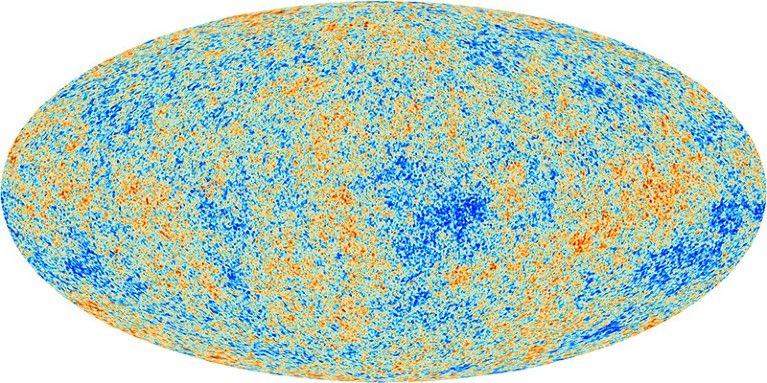
Studying the cosmic microwave background (CMB) is the lead priority of the US particle-physics community.Credit: ESA and the Planck Collaboration
Ripples from the Big Bang
The goal of CMB-S4 is to study radiation that was created around 380,000 years after the Big Bang, when the Universe — which was then a nearly uniform broth of particles — transitioned from plasma to gas. Microwave antennas will measure the CMB’s polarization — a preferential angle at which the radiation’s electric fields wiggle as they reach Earth — across a large portion of the sky. Physicists hope that the resulting polarization map will reveal a pattern that is the signature of gravitational waves that have been shaking the fabric of space-time since the first instant after the Big Bang. While the CMB is the oldest electromagnetic radiation that can be detected, its polarization could provide a window into much earlier times.
Multiple large experiments have attempted to find primordial gravitational waves in the CMB polarization, including the European space telescope Planck and the BICEP2 telescope at the South Pole. And in the Atacama Desert, astronomers are building an array of dishes called the Simons Observatory, due to be completed in mid-2024. Researchers envision CMB-S4 as a scaled-up version of the Simons Observatory that would begin observations in the mid-2030s.
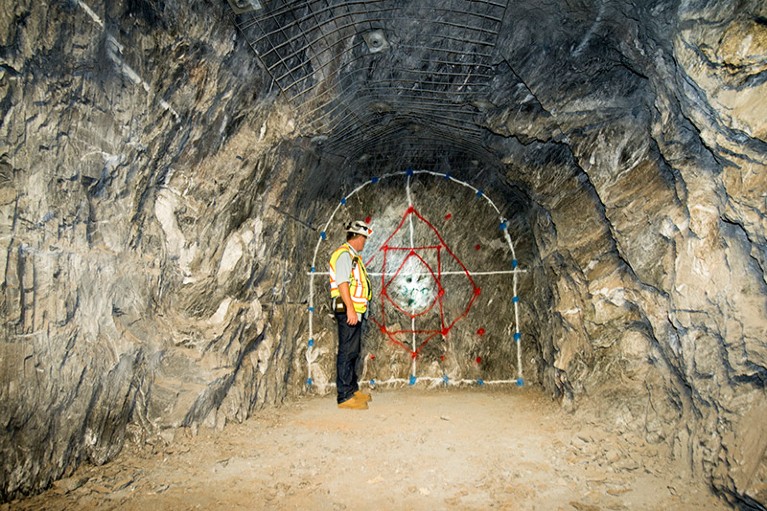
An underground test blast area for the DUNE neutrino experiment at the Sanford Underground Research Facility in Lead, South Dakota.Credit: Reidar Hahn/Fermilab
Double DUNE
The Deep Underground Neutrino Experiment (DUNE) is an experiment that is already under construction and is expected to be completed in the early 2030s. But the P5 is already pushing for it to be expanded.
DUNE will involve two sites, the DOE’s Fermi National Accelerator Laboratory (Fermilab) outside Chicago and the Sanford Underground Research Facility in Lead, South Dakota. An accelerator at Fermilab will create a beam of neutrinos and shoot it in a straight line through the Earth’s crust, from which it will re-emerge nearly 1,300 kilometres away.
The previous P5 prioritization exercise, which took place in 2014, put the US$1.9-billion DUNE project at the top of its priorities for new projects to fund. Construction has since had major delays and cost overruns, which has prompted the DOE to nearly halve size of the Dakota detector. Even in this scaled-down version, the project is still expected to exceed $3 billion.
But the science case for DUNE remains extremely compelling, many physicists think. The P5 is now advocating a phase-2 that will push the detector to its original intended size, and include upgrades at Fermilab that will make its neutrino beam ten times more intense.
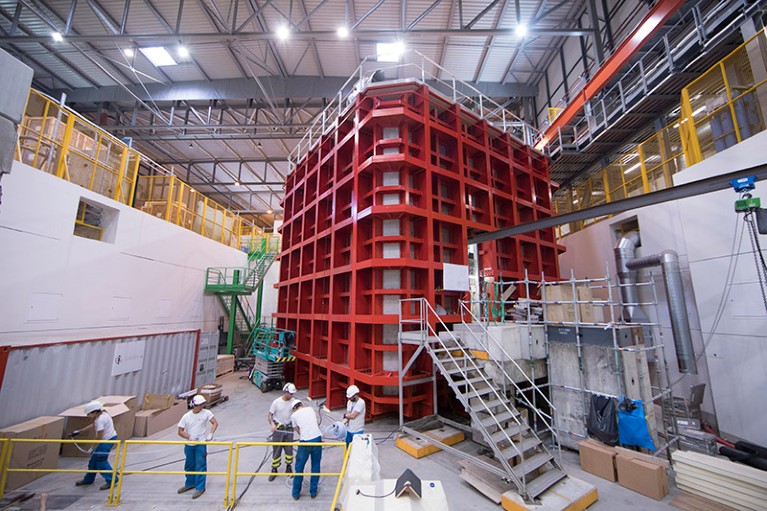
A ProtoDUNE neutrino detector, one of two testbeds for the Fermilab-hosted experiment.Credit: Jim Shultz/Fermilab
A factory for Higgs bosons
The LHC announced the discovery of the Higgs boson — a particle that is supposed to give other particles their mass — in 2012. It was the last particle to be found among those predicted by the standard model of particle physics. But in many respects, the Higgs remains mysterious. Physicists have proposed several designs for accelerators that would produce vast numbers of Higgs bosons and enable precise measurements of their interactions with other particles. These studies could point to possible changes to the standard model, or perhaps even to a completely new theory that will supersede it.
There are two leading proposals for a Higgs factory. One is an International Linear Collider, which would probably be led by and sited in Japan. The other is a circular collider around 90 kilometres long that CERN hopes to build next to the LHC (a detailed feasibility study is ongoing). Both these projects can be done with current technology, says the P5 report, and if either of them is built, the United States should make a significant contribution to it, as it did to the LHC. (China is developing its own design for a large-scale circular Higgs factory.)
The last word on WIMPs
Many experiments have attempted to detect winds of dark matter sweeping through the Solar System, but to no avail so far. The idea was that hypothetical weakly interacting massive particles (WIMPs) might occasionally collide with atoms in a detector and release tell-tale flashes of energy.
The P5 report says this search should be taken to its ultimate conclusion with a scaled-up detector, and that the US agencies should fund one experiment to do so.
One approach to WIMP detection, using liquid xenon, has become the strongest contender as researchers have built detectors with larger and larger amounts of xenon, now approaching 10 tonnes. These have excluded a wide range of particle interactions in a bid to see WIMPs, but researchers say that fully exploring the possibilities for WIMPs will require 50 tonnes.
Any more sensitive, and such experiments will begin to suffer from noise from neutrinos, Murayama told Nature. “In some sense that’s the ultimate experiment, because once neutrinos become a problem, then we really have to start to think what’s next.”
A much bigger chunk of ice
IceCube is an observatory that detects showers of particles streaming through the 3-km-deep ice sheet at the South Pole each time a high-energy neutrino collides with an atom in the ice or in the underlying crust. Sensitive detectors pick up flashes of light produced by the falling particles through 1 km3 of ice.
IceCube has scored a number of discoveries: among them, the first ultra-high-energy neutrinos; the first neutrino traced to a distance source; and the first neutrino map of the Milky Way.
The P5 report endorses IceCube-Gen2 — a volume of ice that researchers can monitor that is larger by a factor of 10 — around 10 km3 — with a comparable increase in the number of neutrinos they can catch. The $350-million upgrade would advance multiple themes in neutrino research and could unequivocally identify the sources of the most energetic particles.
Future accelerators
The panel proposed exploration of a collider that would smash together muons, particles similar to electrons but 207 times more massive. Physicists say it is still unclear whether such a machine can be built, but the panel recommends scaling up research and development with the aim of building a proof-of-principle collider.
“We don’t know if a muon collider is possible, but working towards it comes with high rewards,” said Murayama at the press conference announcing the report.
Agencies should also boost research on a technology that accelerates electrons using plasma, and on advanced magnets for more-traditional colliders. “We’re not abandoning anything at this stage, but would like to have all these three options taken seriously,” Murayama told Nature.
The panel seemed to be sending a strong message to CERN. The European physics laboratory near Geneva, Switzerland, will be an obligatory partner in any future multi-billion-dollar collider. CERN’s leadership is said to have a strong preference for what would be a bigger version of its Large Hadron Collider (LHC), currently the world’s most powerful collider. But many in the particle-physics community say the lab should not restrict its options yet.

Dr. Thomas Hughes is a UK-based scientist and science communicator who makes complex topics accessible to readers. His articles explore breakthroughs in various scientific disciplines, from space exploration to cutting-edge research.

